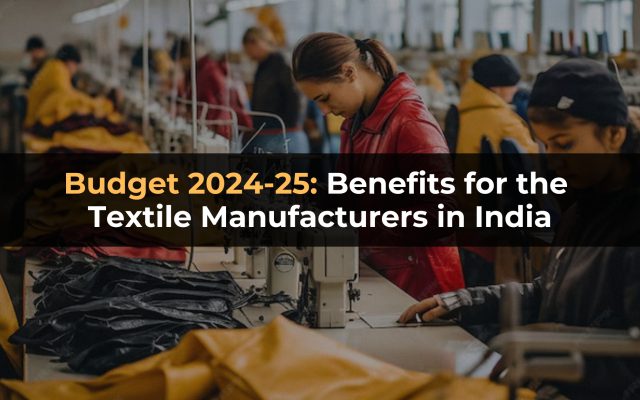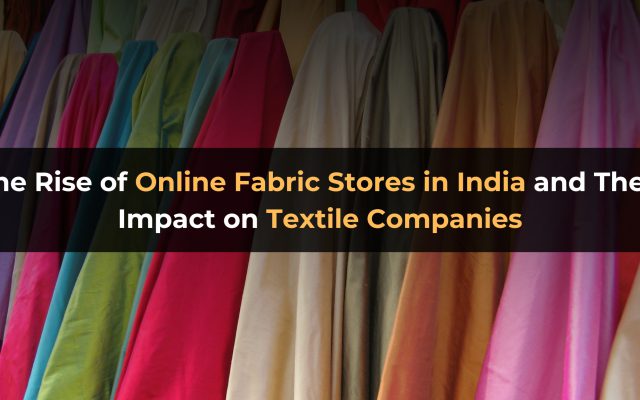Textile manufacturers in India are constantly under pressure to adapt to the present and anticipate future trends in order to ensure their sustainability and survival. While predicting exact future challenges is difficult, despite of TEXbulletin’s real-time market updates, several factors influence the decisions of the textile industry, including global exhaustion of resources, climate change, population growth, demand for organic products, demand for sustainable nonwoven fabric manufacturers, and technological advancements.
As the global population continues to grow, the need for thoughtfully priced wholesale fabric online is expected to increase significantly. Textile and apparel markets in the USA and Europe are forecasted to shrink, while India and China will surpass the former textile giants. Luxury brands are already targeting textile manufacturers in India, China, and Vietnam due to their growing domestic demand. In addition, recycled textiles and high-performance textile fabrics will likely become a trend in the future, as larger brands and B2B fabric buyers are already focusing on using recycled products.
In recent times, major textile companies in India are increasingly exploring the trade of high-performance textile fibers. And therefore, this blog provides insights into high-performance fibers, their benefits, and how they can be procured through wholesale online fabric stores.
Exploring High-Performance Textiles for Textile Manufacturers in India: Benefits and Availability
High-performance fibers belonging to the Specialised fiber group have been developed for industrial purposes, including healthcare and aerospace applications. However, these fibers can also be used in common products such as garments and upholstery. These fibers possess distinct characteristics that are essential for specific mechanical or physical functions. They may have features such as fire, water, or chemical resistance, operating temperature, tensile strength, and limiting oxygen index.
High-performance wholesale fabrics are superior to regular cotton fibers, but they are also more expensive. Woven manufacturers in India often purchase these fabrics from DMI for technical applications such as protective garments, belts, ropes, and sterilized apparel.
Enhancing Fabric Design Functionality with High-Performance Fibers
A wide range of industries and businesses can benefit from using high-performance fabrics due to their versatility in design and application. These fabrics are utilized in sectors like biotechnology, medicine, computer technology, chemical engineering, transportation, and construction. High-performance fibers possess specific properties to cater to the intended use, such as durability, resistance to heat and flame, uniqueness in shape, chemical resistance, and antimicrobial capabilities.
High-performance fabrics can be produced using various materials like fibers, films, membranes, or liquids. These fibers can be sourced from a diverse range of inorganic and organic materials such as stainless steel, aluminum, ceramic, and carbon fibers. These materials are commonly used to manufacture protective clothing, including masks, PPE kits, construction workers’ uniforms, and baby clothes.
Common High-Performance Textile Fibers Found in Wholesale Fabric Online Stores
Glass Fibers:
Glass fibers are a highly popular and long-standing high-performance fiber that is widely used for insulation and reinforcement components. With exceptional thermal properties, they are also incombustible and resistant to oils, fats, acids, alkalization, and solutions.
Carbon Fibers:
Carbon fibers can remain stable at high temperatures up to 800°C. They provide flame resistance and high-temperature resilience and are non-flammable and non-melting. Molten iron factories commonly use carbon fiber textiles as filters. These fibers, made up of 90% carbon, come in various types based on the heat setting, tensile strength, and modulus.
They have diverse applications in aerospace, aircraft, defense, marine, sports, surgical appliances, and recreational equipment. Interestingly, the first commercial carbon fiber was rayon-based, primarily designed for military and heat-resistant purposes.
Metal Fibers:
Metal fibers are versatile materials that can serve both functional and decorative purposes. They come in various forms, such as high-temperature resistant filament yarns, mats, woven fabrics, and roving. Aside from steel, other metals such as aluminum, magnesium, copper, and tungsten are also produced for specific applications.
While silver and gold metal fibers have been commonly utilized for fabric embellishments for centuries, metal fibers offer a multitude of benefits, including thermal regulation, heat resistance, UV and electromagnetic protection, antistatic properties, antistress characteristics, and dye bath tolerance. These exceptional qualities, which include anti-inflammatory, antistatic, antiarthritic, solvent resistance, and pharmacological health benefits, have led to an increased demand for their use in various applications such as antibacterial textiles, filtration, antistatic carpets, furnishings, bedding, and decorative textiles.
What’s the Future for Fabric Buyers in Asia
Asia has transitioned from being a major producer and supplier of textiles to becoming the largest consumer of textiles worldwide. As the demand for apparel continues to grow, there is a significant need for investments in the global manufacturing value chain. Energy efficiency has become a crucial concern for the textile industry, which is now prioritizing the production of eco-friendly and energy-efficient products. Organic textiles are also gaining popularity in this market.
With climate conditions drastically changing, woven and nonwoven fabric manufacturers prefer crops requiring minimal attention and organic farming practices. Natural fibers, especially cotton, are predicted to become more popular in the future because of their comfort and the reduction of chemical waste. The textile industry is also keeping up with technological advancements, utilizing virtual platforms and e-retail like TEXchange Global to reach a wider global market. Fabric buyers and sellers can now easily trade cotton fabric material online through our virtual platform and automate the process.
In order to stay competitive in a constantly changing world, the textile industry must plan ahead. By engaging in strategic planning, textile companies in India can prepare to conquer new markets while developing the flexibility to adapt to a shifting environment. Embracing sustainable strategies is now a crucial aspect of decision-making in the textile sector, promoting both commercial success and positive social impact amidst an uncertain future.
If you are seeking high-performance wholesale fabric online, TEXchange is your ideal platform. Register on TEXchange to explore a wide range of options. Alternatively, you can connect with Damodar Menon International Trading Company; they have 60 years of experience trading cotton, silk, synthetic fiber, yarn, and fabrics worldwide, specializing in the Asian market.




